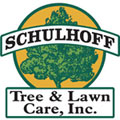As a dog owner, you probably already know that your dog can wreak a lot of damage indoors. Nails can dig into the flooring, teeth can chew through the furniture, and fur can clog your appliances and plumbing.
But did you know that your dog can cause just as much, if not more, damage outdoors?
Although little Fido or Fluffy may look harmless underneath that oak tree or curled up by your shrubs, your pooch may destroy your lawn in a number of ways. If you don’t take care, your grass could quickly turn brown or die completely when left to your pup.
If your dog exhibits any of the following behaviors, you may need to take some proactive steps to ensure your lawn stays in great shape.
1. You Dog Pees in the Grass
When you bring home your puppy, one of the first things you may teach him or her is how to relieve himself or herself appropriately. You might start with crate training and absorbent pads. Or, you may encourage your pooch to signal when he or she needs to go outdoors. In either instance, you’ll ultimately want to housebreak your pet to avoid unpleasant accidents on the carpet.
However, dog urine contains high levels of nitrogen. Although nitrogen is one of the key nutrients grass needs to survive, too much nitrogen can burn spots in the grass, like too much fertilizer can.
To dilute the urine, you should make sure your dog drinks plenty of water throughout the day, and you should water your grass frequently as well. As nitrogen levels are highest during the morning, aim to water your grass not long after you let your pooch out for his or her morning trip.
2. Your Dog Poops in the Yard
As a homeowner, you may not feel obligated to immediately clean up after your dog. To save time, you may only clean and remove pet feces every few days or only when the piles seem particularly noticeable. After all, the poop is natural and it washes away with the rain, right?
But feces, like urine, contain nitrogen. Although the levels aren’t as high in feces as they are in urine, the poop can still burn your grass and cause brown patches in your lawn, especially if you let the feces sit for days at a time.
To prevent long-lasting damage, promptly remove the poop as soon as your dog has had his or her morning constitutional. After particularly large dumps, consider pouring a cup or two of water over the area to dilute any remaining nitrogen. Avoid over fertilizing your yard, and consider training your dog to poop in just one area, perhaps in a patch of pea gravel or dirt.
3. Your Dog Walks Trails in the Turf
Many dogs feel responsible for guarding your home and property. As the local patrol, your dog may police the perimeters of your yard, continually pacing back and forth like a soldier and occasionally darting to the opposite side to ward away intruders.
Over time, your dog may trample a faint path in your grass. If left unchecked, that path may wear away until it becomes little more than a trail of compacted dirt.
Rather than fight your dog’s guarding instinct, create a running space where your dog can safely travel without damaging the rest of your lawn. Concrete, flagstone, river stone, or smooth brick can give your dog a smooth journey while providing some natural decoration for the rest of your yard.
If your dog prefers to use his or her own established trails, you may need to block his or her path via strategic shrubs and fences. Walk and play with your four-legged family member frequently so he or she feels too exhausted to patrol the line.
Hire an Expert to Restore Your Damaged Grass
When you follow the above tips and tricks, you can keep grass damage to a minimum. However, your dog may still hurt your lawn in other ways, such as digging holes or chewing on the young blades.
If your pup has destroyed parts of your yard, hire an expert to renovate your grass and reseed the area. Don’t forget to talk about fertilizer options, as you may need a fertilizer with lower nitrogen levels to compensate for your pup’s activity.
